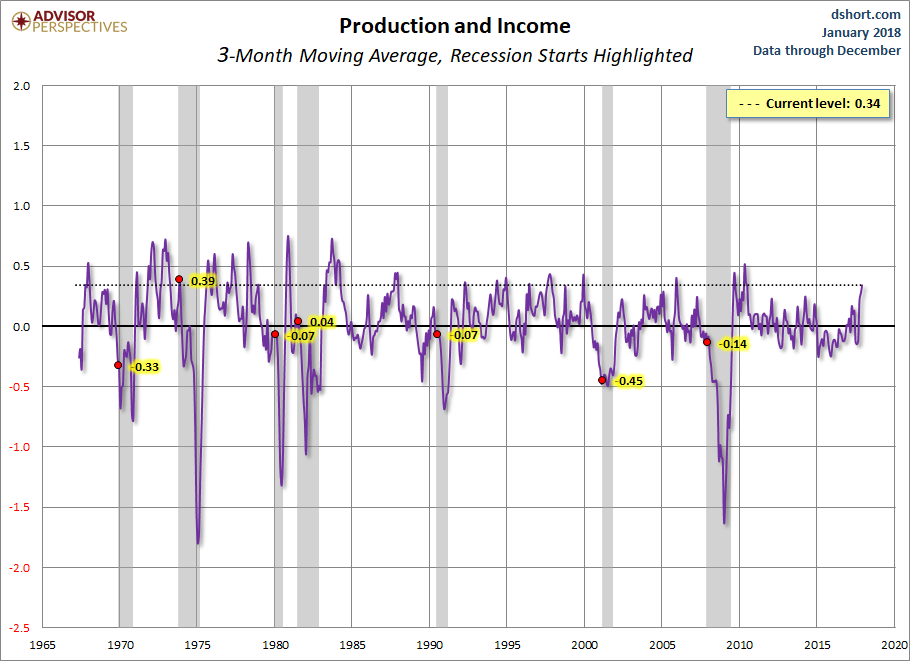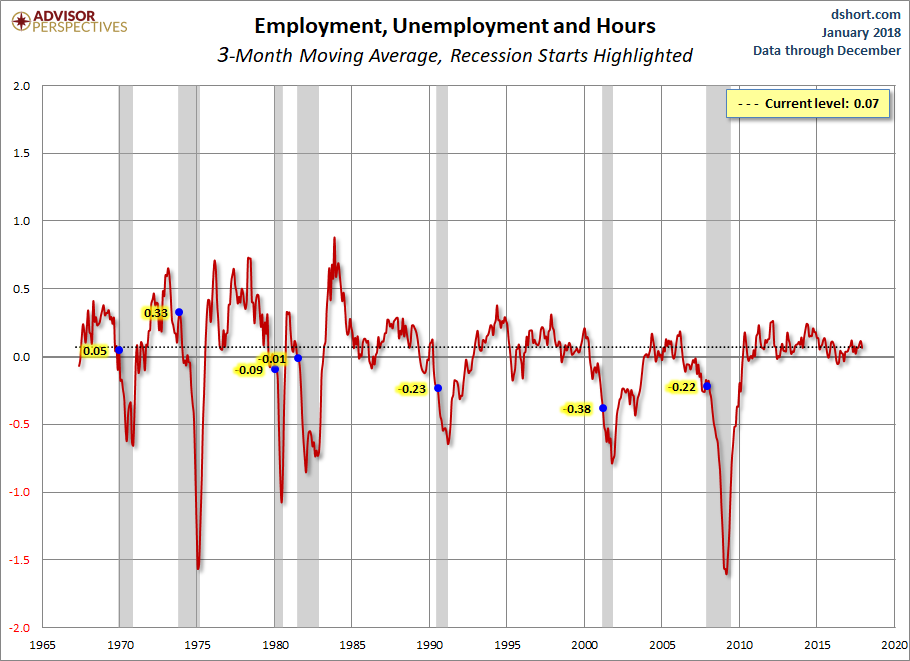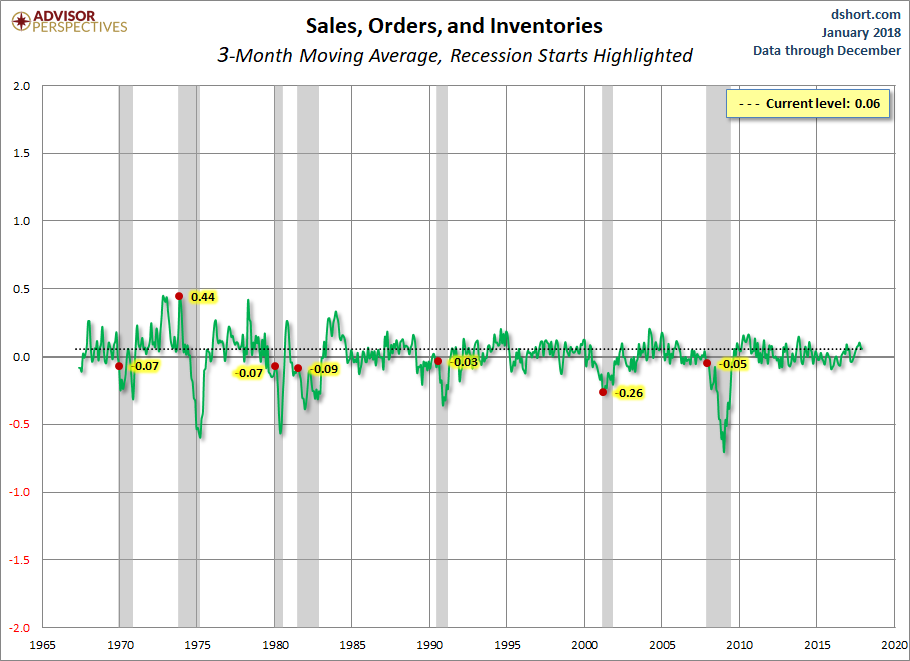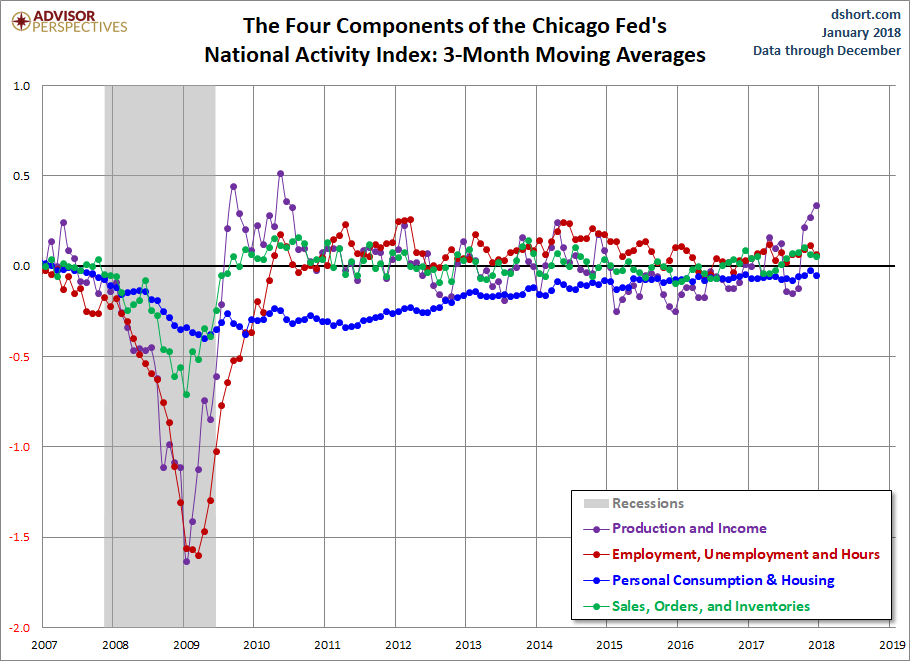The Chicago Fed's National Activity Index, which we reported on yesterday morning, is based on 85 economic indicators drawn from four broad categories of data:
- Production and Income
- Employment, Unemployment, and Hours
- Personal Consumption and Housing
- Sales, Orders, and Inventories
The complete list is available here in PDF format.
In this morning's Chicago Fed update, we learned that "Led by improvements in production-related indicators, the Chicago Fed National Activity Index (CFNAI) moved up to +0.27 in December from +0.11 in November. Two of the four broad categories of indicators that make up the index increased from November, and three of the four categories made positive contributions to the index in December. The index’s three-month moving average, CFNAI-MA3, ticked down to +0.42 in December from +0.43 in November."
A chart overlay of the complete multi-decade span of all four categories, even if we use the three-month moving averages, is quite challenging for visual clarity:

So here is a close-up view since 2000:

Here is a set of charts showing each of the four components since 1967. Because of the highly volatile nature of the data, the charts are based on three-month moving averages, a smoothing strategy favored by the Chicago Fed economists. The values for the months that the NBER subsequently identified as recession starts are also indicated.




To close this dissection of the CFNAI components, let's reassemble them for a closer look at their collective 3-month moving averages since 2007.

Check back next month for another close-up look at the latest trend directions.
Which stock should you buy in your very next trade?
With valuations skyrocketing in 2024, many investors are uneasy putting more money into stocks. Unsure where to invest next? Get access to our proven portfolios and discover high-potential opportunities.
In 2024 alone, ProPicks AI identified 2 stocks that surged over 150%, 4 additional stocks that leaped over 30%, and 3 more that climbed over 25%. That's an impressive track record.
With portfolios tailored for Dow stocks, S&P stocks, Tech stocks, and Mid Cap stocks, you can explore various wealth-building strategies.
